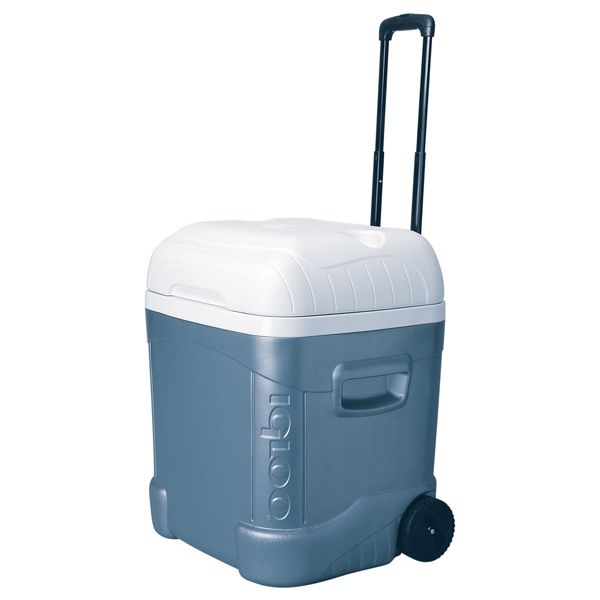dummkauf
Well-Known Member
Ok, I'm a new, but pretty successful, extract brewer with 5 batches under my belt and soon to be 6 this coming weekend. Anyway, after spending a whole bunch of money on DME for this coming weekends batch, it has seriously got me thinking about all grain, as well as the other benefits of going all grain. I've been doing my research and am looking for an economic way to jump into all grain and I think I've got it figured out but am looking for some input before i start buying stuff.
All the all grain setups I see usually involve 3 vessels for holding liquid, what I am proposing is trying to get away with using just 2. I currently have a 7 gallon stainless steel brew pot I am using for my extract brews with a spiggot installed to drain to my CFC for cooling. I also have a large coleman cooler sitting in the garage that I'm thinking of cleaning out and using(or maybe just buy a new one depending on how funky the garage one looks) and either doing the stainless steel mesh filter or the PVC frame on the bottom of the cooler. Which if I've done my research right, my brew day would look like this:
1.) Heat up water to the right temp for mashing(or a couple degrees higher since my cooler will instantly suck up some of the heat) in my 7 gallon brew pot. I am doing full boils already and have a propane burner for heating the water.
2.) Add grains and water to the cooler, and let sit until conversion is complete.
3.) Warm up additional sparge water in my 7 gallon brew pot for sparging while I'm waiting for conversion to complete from step 2
4.) Drain "wort" out of cooler into my bottling bucket(guess this would be vessel #3 huh).
5.) Sparge with the water heated up in step 3. This is basically just pouring hot water over the remaining grain bed left after I drained the cooler right?
6.) Dump all of the wort out of the bottling bucket and back into my 7 gallon brew pot.
7.) Boil wort and add hops as dictated by whatever recipe I'm brewing.(This is basically where I start today with my extract)
8.) Cool, pitch yeast, put in closet.
So, am I missing anything? Or would I really be able to move to all grain by simply converting a cooler into a mash tun and using the existing equipment I already have.
And as for coolers, would cleaning out an old used one be a good idea, or would I be better off just buying a new one(I'm looking to be cheap but could swing a new cooler if really needed)?
Are all plastic coolers made out of food grade plastic? I would imagine they are, but just want to check if there's something specific to be looking for.
Thank you!!!
All the all grain setups I see usually involve 3 vessels for holding liquid, what I am proposing is trying to get away with using just 2. I currently have a 7 gallon stainless steel brew pot I am using for my extract brews with a spiggot installed to drain to my CFC for cooling. I also have a large coleman cooler sitting in the garage that I'm thinking of cleaning out and using(or maybe just buy a new one depending on how funky the garage one looks) and either doing the stainless steel mesh filter or the PVC frame on the bottom of the cooler. Which if I've done my research right, my brew day would look like this:
1.) Heat up water to the right temp for mashing(or a couple degrees higher since my cooler will instantly suck up some of the heat) in my 7 gallon brew pot. I am doing full boils already and have a propane burner for heating the water.
2.) Add grains and water to the cooler, and let sit until conversion is complete.
3.) Warm up additional sparge water in my 7 gallon brew pot for sparging while I'm waiting for conversion to complete from step 2
4.) Drain "wort" out of cooler into my bottling bucket(guess this would be vessel #3 huh).
5.) Sparge with the water heated up in step 3. This is basically just pouring hot water over the remaining grain bed left after I drained the cooler right?
6.) Dump all of the wort out of the bottling bucket and back into my 7 gallon brew pot.
7.) Boil wort and add hops as dictated by whatever recipe I'm brewing.(This is basically where I start today with my extract)
8.) Cool, pitch yeast, put in closet.
So, am I missing anything? Or would I really be able to move to all grain by simply converting a cooler into a mash tun and using the existing equipment I already have.
And as for coolers, would cleaning out an old used one be a good idea, or would I be better off just buying a new one(I'm looking to be cheap but could swing a new cooler if really needed)?
Are all plastic coolers made out of food grade plastic? I would imagine they are, but just want to check if there's something specific to be looking for.
Thank you!!!




